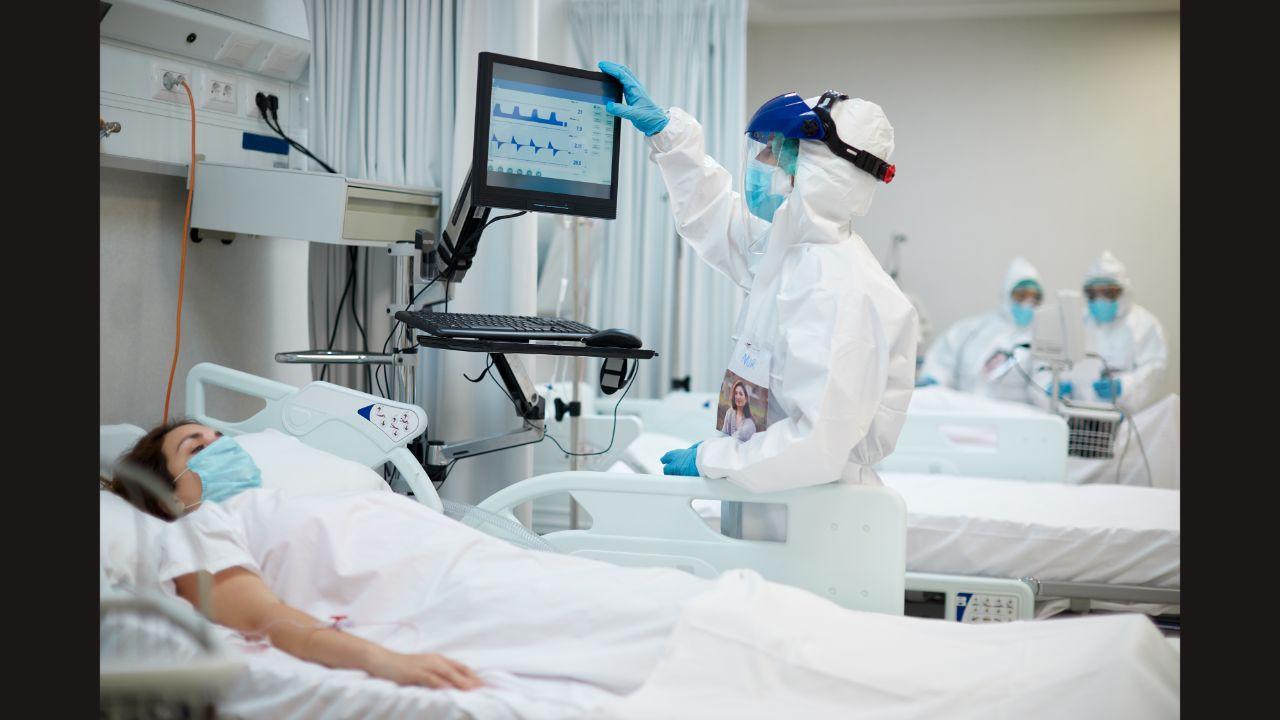The Centre on Tuesday said that health was a state subject and the states had reported no coronavirus deaths owing to a lack of oxygen in the second wave. Here is an assessment of the government statement versus reports on the oxygen crisis from state hospitals, the press, and research groups over the last few months

The photo is for representational purpose only
No deaths due to lack of oxygen were specifically reported by states and UTs during the second Covid-19 wave, the Narendra Modi-led government claimed in Rajya Sabha on Tuesday, the second day of the Monsoon session in Parliament. The statement sparked censure from opposition leaders including Aam Aadmi Patry’s Satyendar Jain and Congress’s MK Venugopal, who said the ministry was tabling wrong figures and misleading the house.
ADVERTISEMENT
Responding to a question on whether a large number of Covid-19 patients had died on roads and hospitals due to an acute shortage of oxygen in the second wave, Minister of State for Health Bharati Pravin Pawar noted that health is a state subject and that states and UTs regularly report the number of cases and deaths to the Centre.
"Detailed guidelines for reporting of deaths have been issued by the Union Health Ministry to all states and UTs,” Pawar said in a written reply. "Accordingly, all states and UTs report cases and deaths to the Union Health Ministry on a regular basis. However, no deaths due to lack of oxygen have been specifically reported by states and UTs.”
On Wednesday, Shiv Sena MP Sanjay Raut condemned the Union government’s claim. "Many people have died due to oxygen shortage in several states. Those whose relatives (Covid-19 patients) died due to oxygen shortage should take the Union government to court," news agency PTI quoted Raut as saying. In a video statement, Delhi Deputy Minister Manish Sisodia said the Centre had backed out when the Delhi government said it wanted to establish a panel to probe deaths due to the oxygen crisis.
Notably, hospitals from various parts of the country had reported deaths due to oxygen shortage during the brutally damaging second wave. In fact, Allahabad High Court on May 5 had said, the death of Covid-19 patients for non-supply of oxygen is a criminal act, “not less than genocide.”
Ground reports from the states
On April 23 officials at Sir Ganga Ram Hospital in Delhi had said twenty-five "sickest" Covid-19 patients died, amid a serious oxygen crisis that was unfolding in the national capital at the time. Another eight Covid-19 patients, including a doctor, died at Delhi's Batra Hospital on the afternoon of May 1, again due to a shortage of medical oxygen at the facility.
Considering the death of the eight patients at Batra Hospital, the high court said: "Water has gone above the head. You (Centre) have to arrange everything now. You have made the allocations. You have to fulfil them. Eight lives have been lost. We can't shut our eyes to it."
As many as 24 patients, including 23 suffering from Covid-19, died in Karnataka's Chamarajanagar due to alleged oxygen shortage in the district hospital between May 2 and 3, officials said. Goa’s apex government hospital, the Goa Medical College reported as many as 75 deaths during the period of May 10 to May 14 due to oxygen mismanagement.
Official toll vs true deaths
Through the months of April and May, the oxygen crisis had emerged as a severe national crisis which led to the kin of Covid-19 patients resorting to social media in order to procure oxygen tanks or concentrators and oxygen beds in hospitals.
Not just deaths from the lack of oxygen, many experts believe the overall official death toll suffers from undercounting too. India’s Covid-19 deaths were likely 10 times the official toll, a study by Arvind Subramanian, former chief economic adviser to the Indian government, and two other researchers at Washington D.C.-based think tank Center for Global Development and Harvard University said.
The official count could have missed deaths occurring in overwhelmed hospitals or while health care was delayed or disrupted, especially during the devastating peak surge earlier this year, the report observed.
“True deaths are likely to be in the several millions not hundreds of thousands, making this arguably India’s worst human tragedy since Partition and independence,” according to the researchers, who examined deaths from all causes and compared that data to mortality noted in previous years — a method that is widely considered an accurate metric.
Demand and supply for oxygen
Acknowledging the severe increase in oxygen requirement, the Centre on Tuesday said there was an unprecedented surge in demand for medical oxygen during the second wave and it peaked at nearly 9000 MT compared to 3095 MT in the first wave, following which the Centre stepped in to facilitate equitable distribution among the states.
The active caseload of the state and UT was the primary determinant of oxygen allocation, it said, noting that a total of 10,250 MT had been allotted to 26 high burden states as on May 28, 2021.
(With inputs from agencies)
Also Read: Explained: What are the Kappa and Lambda variants of Covid-19? Should you be concerned?
 Subscribe today by clicking the link and stay updated with the latest news!" Click here!
Subscribe today by clicking the link and stay updated with the latest news!" Click here!






